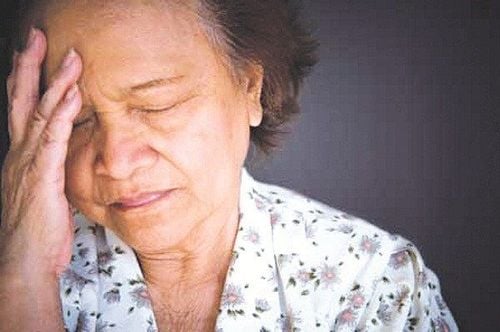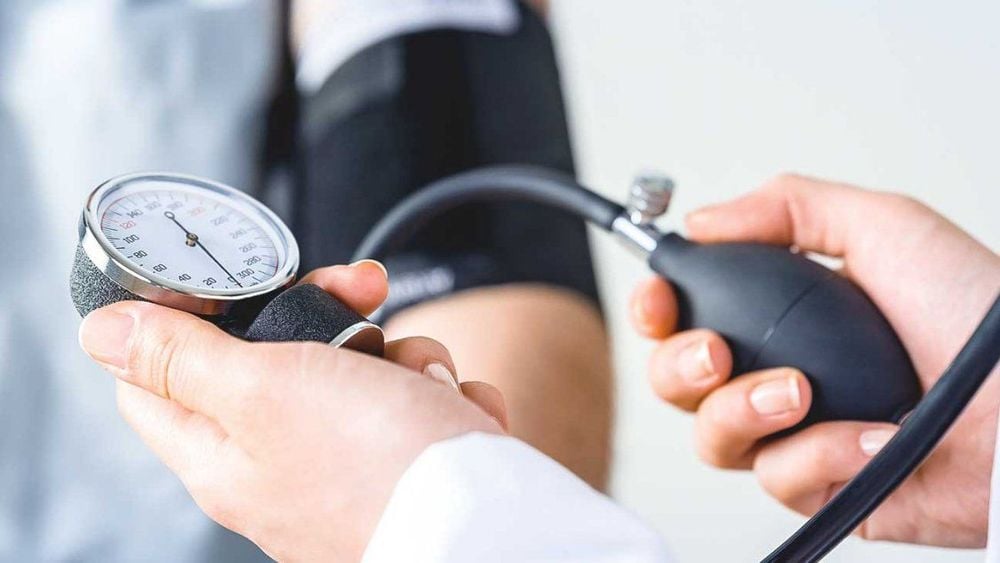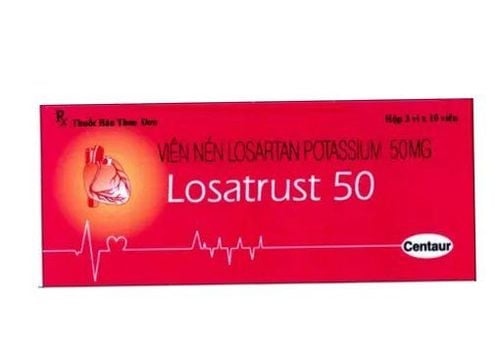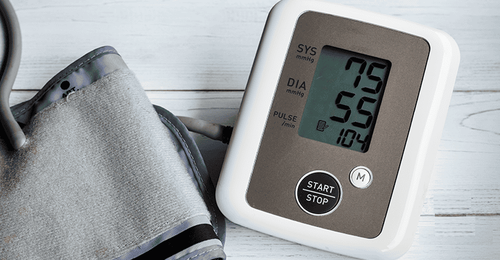This is an automatically translated article.
The article was professionally consulted with Doctor General Internal Medicine - Department of Medical Examination & Internal Medicine - Vinmec Hai Phong International General Hospital.
Orthostatic hypotension is one of the common disorders of low blood pressure. This is a common cause of fainting, which can be the beginning of an autonomic disorder. Postural hypotension causes a lot of damage to other organs and organs, leaving many complications with a high risk of even death.
1. What is postural low blood pressure?
According to the American Autonomic Neurological Association and the American Academy of Neurology, orthostatic hypotension is defined as a decrease in systolic blood pressure of at least 20 mmHg and/or diastolic blood pressure of at least 10 mmHg while standing in round 3 minutes.
This is done according to the principle of “water flows low”. This means that when in a standing position, due to the influence of gravity, the blood in the body will be pushed towards the veins of the lower body (eg the veins of the lower extremities) and is kept there. At this time, venous return is reduced, resulting in a decrease in cardiac output, causing blood pressure to drop, and at the same time, the amount of blood and oxygen supplied to the brain is also reduced. As a result, the patient may experience cognitive disturbances and even fainting.

Orthostatic hypotension is a common medical condition in the elderly. According to a study of American medicine, among the medical records of orthostatic hypotension, up to 20% of patients are over 65 years old. According to another study, the rate of orthostatic hypotension in people over 65 years old is 18%, but of these, only 2% of cases have specific clinical manifestations. Most cases of orthostatic hypotension are asymptomatic or even completely normal. This sometimes causes a lot of trouble for the diagnosis.
The detection of orthostatic hypotension is based on blood pressure and heart rate readings in the supine position (at least 5 minutes) and then in the standing position for 2 time points: Standing 1 minutes and stood for 3 minutes. In cases where orthostatic hypotension is suspected, but orthostatic blood pressure testing does not confirm the diagnosis, a tilt table test may be used.
Trắc nghiệm: Huyết áp của bạn có đang thực sự tốt?
Huyết áp cao hay thấp đều ảnh hưởng đến tình trạng sức khỏe con người. Để biết tình trạng huyết áp của bạn có thực sự tốt không, hãy làm bài trắc nghiệm sau đây để đánh giá.2. Causes of orthostatic hypotension
Orthostatic hypotension occurs when the body's homeostatic mechanisms are disturbed:
Disturbance of autonomic nerve transmission and reflex arc. Decreased circulating blood volume. Decreased heart contractility and blood vessel response to body activities. Impaired response to endocrine hormones. All diseases affecting the above factors can cause orthostatic hypotension such as:
Cardiovascular diseases:
Decreased blood volume seen in diseases such as adrenal insufficiency, bleeding or diseases that cause dehydration. Decreased spasmodic tone of blood vessels in cases of hypokalemia or due to prolonged lying down. Decreased cardiac output due to heart failure, myocardial infarction or arrhythmia... Orthostatic hypotension can also occur in cases of hyperaldosteronism or peripheral venous insufficiency. Neurological diseases:
Diseases related to the central nervous system such as parkinsonism, cerebrovascular accident. The most common peripheral neuropathy-related diseases is autonomic neuropathy, which can also be seen in neurologic complications of diabetes... In addition, tumors and pathologies belong to diabetes. The spinal cord can also cause orthostatic hypotension. Due to drug use:
Some antihypertensive drugs can cause orthostatic hypotension such as calcium channel blockers, nitrate drugs. Drugs that activate autonomic nerves such as alpha blockers or tricyclic antidepressants... In addition to the above causes, factors such as alcohol, prolonged lying down or pregnancy can also cause orthostatic hypotension. .

3. Clinical manifestations of orthostatic hypotension
Manifestations of orthostatic hypotension are similar to low blood pressure, which are typical symptoms of cerebral hypoperfusion including:
Headache, dizziness, blurred vision. People who are tired, have unclear signs of pain in the shoulder and neck area. Cognitive disorder. People dozed off even fainted. Depending on the cause and accompanying diseases, other symptoms may appear such as: chest pain, shortness of breath, tachycardia, vomiting and nausea, persistent diarrhea, edema or signs of Other neurological disorders... These symptoms are usually worse in the morning, appear when standing and reduce when the patient rests in the lying position.
4. Complications and prevention of orthostatic hypotension
Complications of orthostatic hypotension come very quickly and are dangerous, can fall causing injury to areas of the body due to sudden fainting. If blood pressure drops too low and persists, it can cause stroke, neurological disorders and loss of consciousness.
Therefore, to prevent dangerous complications from orthostatic hypotension, you need:
Have a reasonable living diet. Exercise regularly and regularly every day. If you have a history of low blood pressure, you can change your diet to increase salt in your diet and follow the treatment prescribed by your doctor. Avoid lying down for too long, limit the use of alcohol, tobacco. Go for regular check-ups and regular health check-ups to detect diseases and treat them promptly. Orthostatic hypotension is an important clinical condition with a low morbidity and mortality risk, especially in the elderly. A full assessment and timely treatment of this condition will help you achieve stable health and avoid dangerous complications later, so when you detect unusual signs of health, go to the doctor. reputable medical facilities to be examined and diagnosed by a specialist doctor in a timely manner.
Therefore, to ensure the overall cardiovascular health of customers in the most comprehensive way, Vinmec International General Hospital has implemented Cardiovascular Screening Packages. The examination package is performed by a team of highly qualified and experienced medical doctors, always dedicated to the health of customers. In addition, Vinmec has a system of modern and comfortable facilities, ensuring the highest screening efficiency along with the professional service quality that has become a trademark, giving customers complete peace of mind when taking care of their health. healthy here.
Please dial HOTLINE for more information or register for an appointment HERE. Download MyVinmec app to make appointments faster and to manage your bookings easily.













